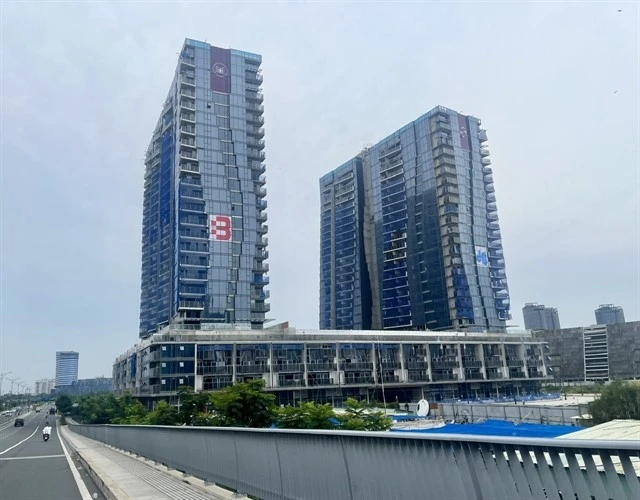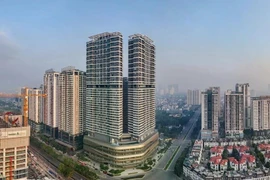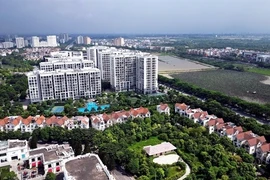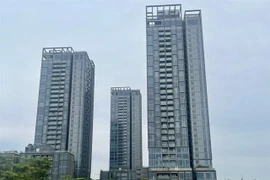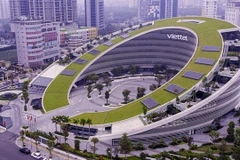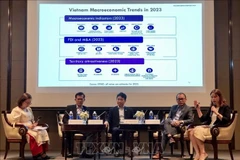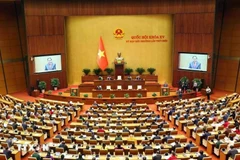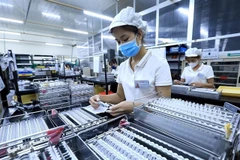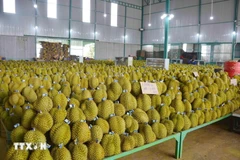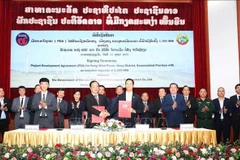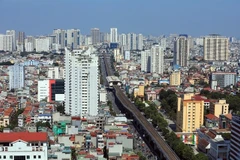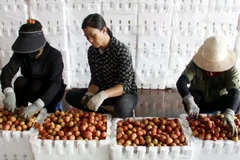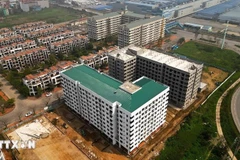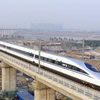HCM City (VNS/VNA) - Vietnam’s housing market is facing pressure with soaring prices, making Ho Chi Minh City and Hanoi, the country’s two business and financial hubs, among Asia’s least affordable cities for homebuyers, according to a report by property consultant CBRE.
According to the recently-published report, which examines the gap between housing costs and income levels in major Asian cities, the two Vietnamese cities have even surpassed Singapore in the gap between housing prices and average income.
In Hanoi, the average price for an apartment is about 2,600 USD per sq.m, while the typical annual income stands at 6,300 USD, which results in a concerning income-to-housing price ratio of 2.4.
In HCM City, the average apartment price is 2,800 USD per sq.me, with an average annual income of 7,500 USD, yielding a ratio of 2.7.
A higher ratio typically indicates improved affordability, while a lower ratio suggests a lack of affordability.
Hong Kong (known as among the world’s least affordable housing markets), with a ratio of 1.7, ranks worse than these Vietnamese cities, with Seoul and Manila following closely behind at 2.3.
The findings from CBRE revealed a reality that acquiring a home in HCM City and Hanoi has become more challenging than in Singapore.
Although housing prices in Vietnam are comparable to those in other Asian countries, the average income remains significantly lower, resulting in these concerning affordability ratios.
For instance, the average income in Kuala Lumpur is four times that of Hanoi.
Various studies have corroborated these findings, including a report from the property listing platform Batdongsan, which identifies HCM City and Hanoi as among the least affordable housing markets in Southeast Asia.
The analysis indicated that a resident in Hanoi would need to work for 50 years to purchase a house and 23 years for an apartment.
In HCM City, the figures are similarly stark, requiring 53 years for a house and 24 years for an apartment.
The International Monetary Fund considers housing to be affordable if it does not exceed 30 years of household income.
In many developed nations, young professionals typically require approximately 10 to 15 years to acquire a home; however, in Vietnam, this duration extends to 23 to 25 years, encompassing an entire working career.
The Vietnam Association of Real Estate Brokers (VARS) estimated that current prices for apartments range from 40–70 million VND (1,600–2,800 USD) per sq.m. So purchasing a 60sq.m apartment in either city may cost between 2.5–3.5 billion VND.
Even individuals within the top 20% of income earners in Vietnam (earning 13–20 million VND per month) face huge challenges in securing homeownership, while lower-income groups face nearly insurmountable barriers.
A recent report from the Ministry of Construction showed apartment prices surged by 40–50% in Hanoi and 20-30% in HCM City last year compared to 2023.
A survey conducted by the HCM City Institute for Development Studies revealed the majority of residents can only afford to cover half the cost of the properties they aspire to own.
Dr. Nguyen Van Dinh, Chairman of VARS, said even if housing prices were reduced by half, many middle- and low-income earners would still find it challenging to purchase homes.
Since 2018, government policies regarding capital and real estate regulations have been tightened, severely constraining the housing supply, while demand continues to escalate, leading to prices that far exceed income growth rates, he added.
Dinh predicted that urban housing prices will remain high due to limited land availability, rising development costs, and increasing expenses related to land and projects. As a result, commercial housing is likely to remain unattainable for many.
Duong Thuy Dung, managing director of CBRE Vietnam, said that 40,000 new apartments were launched last year in HCM City and Hanoi, with 90% of these being high-end or luxury units priced above 60 million VND per sq.m.
“There are currently no market conditions that would facilitate a decrease in housing prices in the short term,” she noted.
Factors such as new land pricing frameworks, escalating land costs, labour expenses, and construction and logistics fees are all expected to contribute to ongoing price increases.
Analysts recommended that in the long term, Vietnam should invest more in infrastructure and promote population shifts to suburban areas to mitigate the rising costs./.
